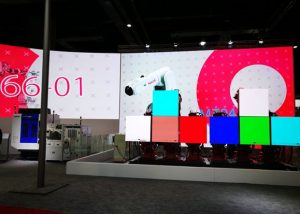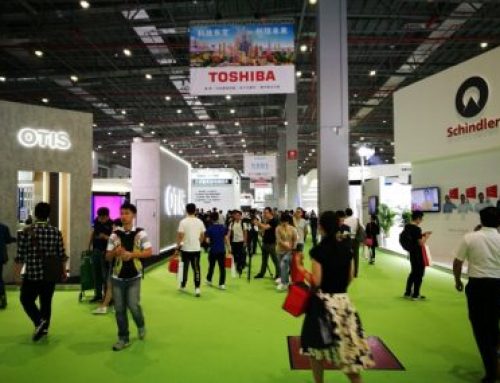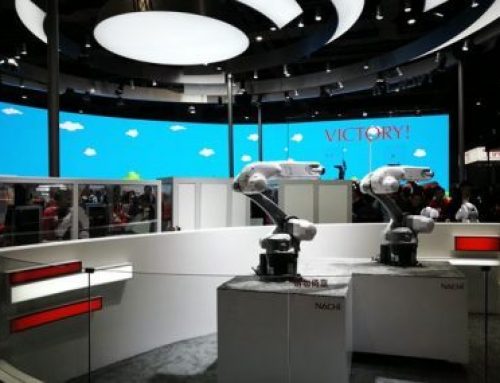
April 26, 2018 – Microsoft has announced several updates and advancements at Digital Factory Hall at Hannover Messe 2018, the world’s largest annual manufacturing exhibition in Hannover, Germany. As related to manufacturing, some of these updates include:
- Automatic Discovery Service for Connected Factory: Several components have been added to the industrial IoT reference architecture to simplify onboarding and securing industrial assets. Available as open source in Azure IoT Suite Connected Factory, the components run on Azure IoT Edge and as micro-services on Azure and include an OPC UA Global Discovery Server interface for compatibility with existing clients and servers.
- Azure IoT Hub and Device Provisioning Service on Azure Stack: Microsoft also announced Azure IoT Hub and IoT Hub Device Provisioning Service to Azure Stack, extending the reach of Azure to on-premises environments. This will allow operators to deploy and manage their IoT devices as well as collect and process real-time data within their facility.
- Azure Sphere: Last week at the RSA security conference, Microsoft announced a preview of Azure Sphere, the first holistic platform to provide industrial-grade security for connected microcontroller (MCU) devices, 9 billion of which are expected to ship this year in machines ranging from home appliances to industrial equipment in factories.
- Azure Time Series Insights: In response to manufacturers’ requests, Microsoft is planning a new update to Times Series Insights (TSI), a service that adds scalable storage and data archiving capabilities.
Automatic Discovery Service for Connected Factory
Microsoft has also made a commitment to the OPC UA interoperability standard developed and maintained by OPC Foundation. They are working to take a very active role within the foundation and have increased participation in the working groups. They’ve also created several Azure IoT Edge modules including OPC Twin and Global Discovery Server that automatically detect, register, and perform a security audit on industrial assets—giving operators the option to automatically configure the security of those assets leveraging OPC UA.
With OPC Twin and Global Discovery Server integrated into Azure IoT Suite Connected Factory, operators are no longer required to manually exchange OPC UA certificates for each client and server on the factory floor. Instead, they can manage these security settings on a global scale using a cloud-based interface. OPC Twin also allows operators to securely interact with each OPC UA asset in their factory from the Azure cloud.
Azure IoT Hub and Device Provisioning Service on Azure Stack
IoT operators can’t always rely on an internet connection to run mission-critical manufacturing processes. To address latency and connectivity requirements, and specific regulatory and compliance policies, Azure IoT Hub and IoT Hub Device Provisioning Service will be made available on Azure Stack. This is intended to enable deployment of IoT solutions for managing IoT devices and processing real-time data within local facilities. Azure Stack will enable IoT scenarios with intermittent connectivity, disconnected operations for remote sites, and applications that cannot send data to the public cloud because of regulatory requirements.
These additions will provide more deployment choices for manufacturers. For global deployments, customers may need to host different regional instances of the same application in Azure or Azure Stack, depending on their business and technical needs. Customers also have the option of connecting Azure Stack to Azure for hybrid solutions so they can benefit from the local capabilities of Azure Stack, while obtaining a global view across multiple instances or performing advanced analytics in the Azure cloud at scale.
Azure Sphere
As more consumer products, industrial devices, and manufacturing services become connected, a tiny chip called an MCU will be available in nearly every one of them. No larger than a thumbnail, these chips will play a vital role in device performance, hosting essential functions such as compute, memory, and storage. Microsoft recently announced Azure Sphere, a platform for securing and powering this new class of IoT devices at the intelligent edge. Security is built into the chip’s silicon. Azure Sphere also includes a secure operating system designed specifically for IoT as well as a cloud security service that will monitor and detect threats, and automatically update security protocols. As MCU chips proliferate, Azure Sphere will work to allow manufacturers to produce the next generation of connected devices while increasing IoT security at every level.
Azure Time Series Insights
Historically, time series data—or sensor readings taken at intervals—has been challenging to store, analyze, and visualize. Azure TSI works to put meaningful insights into the hands of manufacturers by adding scalable storage and data archiving capabilities—creating a single place for the long-term storage of this time series data in the cloud. Manufacturers will be able to move their times series data to an IoT cloud platform where this information can be more securely stored and managed.
TSI also adds a device-based or “tag-based” user experience for process engineers and asset operators to get value from TSI’s visualization experience. Organizations can add hierarchy and context to their data, so users can find and compare their devices and tags for further trend analysis. TSI has been integrated with Microsoft Power BI, for industrial systems operators to visualize their time series data so they can take informed action. TSI can also be connected to Azure Machine Learning Studio and other third-party machine learning tools such as Jupyter Notebook and Apache Zeppelin, and can be used in conjunction with batch analytics tools like Azure Databricks and other Apache Hadoop and Apache Spark ecosystem services.
Partner and customer momentum
A strong partner ecosystem is critical to the future of IoT. Siemens announced its IoT ecosystem MindSphere is now available on the Microsoft Azure cloud platform, enabling a partnership intended to give joint customers the ability to make their IoT applications available on the Microsoft cloud. MindSphere can connect assets to Microsoft’s intelligent cloud services, allowing industry applications to operate with intermittent connectivity, and provide local feedback loops, cognitive services, edge analytics, and artificial intelligence on the edge. The preview of MindSphere for Microsoft Azure is available for select customers and partners, and will follow a continuous development and deployment model. MindSphere for Microsoft Azure is planned to be generally available in the calendar 4thquarter of 2018.
The open platform as a service infrastructure will also empower partners to develop and deliver new applications. Azure cloud is used by IoT platforms from automation companies including ABB, Emerson, GE, Honeywell, PTC, Rockwell Automation, SAP, Schneider Electric, and Yokogawa.

